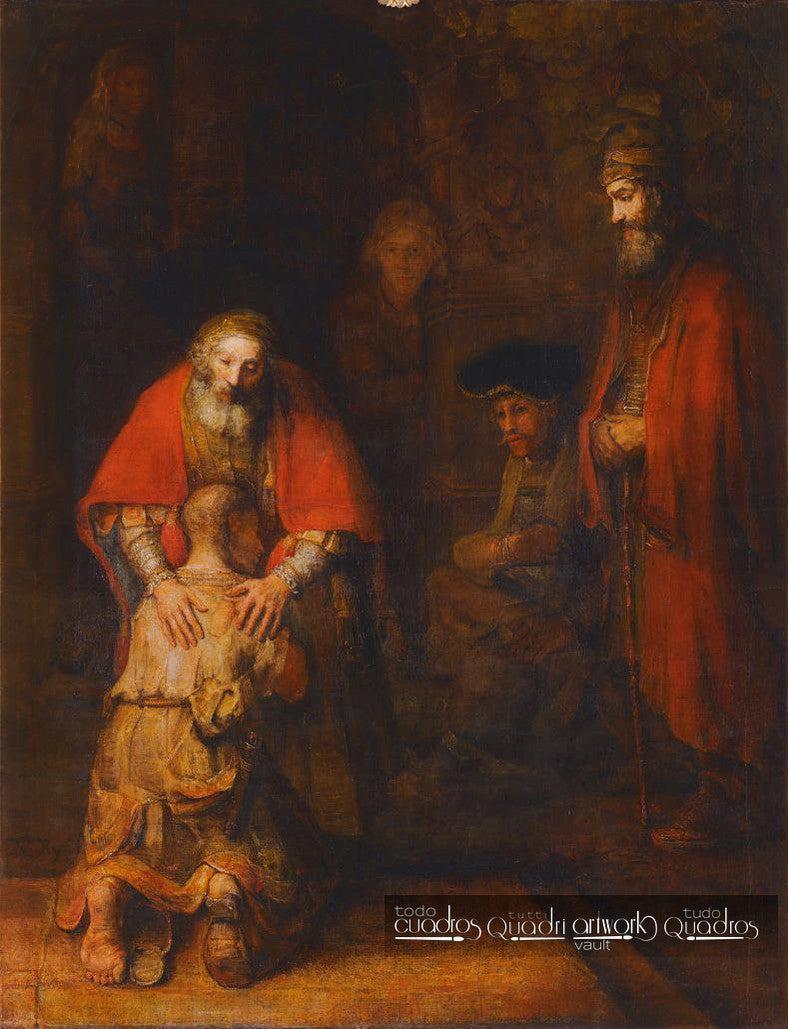

The Return of the Prodigal Son, Rembrandt
- Oil on linen canvas
- 100% hand-painted
- Painting reproduction
- Available for online purchase
- See quality
- Shipping
- Money-Back Guarantee
- Reviews
| Author: | Rembrandt |
|---|---|
| Original Title: | Terugkeer van de Verloren Zoon |
| Type: | Painting |
| Medium | Oil |
| Support: | Canvas |
| Year: | 1963-65 |
| Genre: | Religious paintings |
| Subject: | Biblical passage |
| Located: | Hermitage Museum, Russia |
The work "The Return of the Prodigal Son" was painted between 1963 and 1965 by the Dutch Rembrandt, a painter, and engraver, the greatest exponent of the Baroque style.
The elements of the painting have not been left to chance; studies have been made of every detail, facial expressions, body postures, colors, and lighting, each aspect meticulously considered by the painter, attending to his own faith.
The scene represents the parable of the prodigal son, narrated in chapter 15 of the Gospel of Luke, specifically when the repentant and ashamed young man returns to his father's house after having squandered all his estate. Seeing him from afar, the father runs to meet him with joy, and the son prostrates before him. To explain the event, the father exclaims to all: "This son of mine was dead and is alive again; he was lost and is found". Meanwhile, the elder brother and his friends look on with disdain.
The work is currently on display in the art gallery of the Hermitage Museum, St. Petersburg, Russia.
Choose options


Why is this painting famous?
The Return of the Prodigal Son, although painted in the final years of Rembrandt’s life, remained relatively little known until it entered the collection of the Hermitage Museum in 1766, when it was acquired by Catherine the Great as part of a lot of European art aimed at culturally legitimizing the Russian court. In the 19th century, the Hermitage placed it in prominent galleries, enabling travelers, writers, and diplomats to disseminate it through chronicles and engravings. During the 20th century, its prestige was reinforced by its inclusion in scholarly publications that identified it as a synthesis of Rembrandt’s late style: loose brushwork, restrained composition, and profound spiritual depth. International dissemination multiplied with photographic reproductions after World War II, coinciding with renewed interest in Dutch Golden Age art. Its fame reached an even broader audience thanks to theologian Henri Nouwen’s book The Return of the Prodigal Son (1992), which turned the image into a symbol of forgiveness and reconciliation in religious and educational contexts. Today, it is one of the most requested works on guided tours of the Hermitage and a regular reference in lectures, thematic exhibitions, and audiovisual material on Rembrandt.Discover more famous paintings

